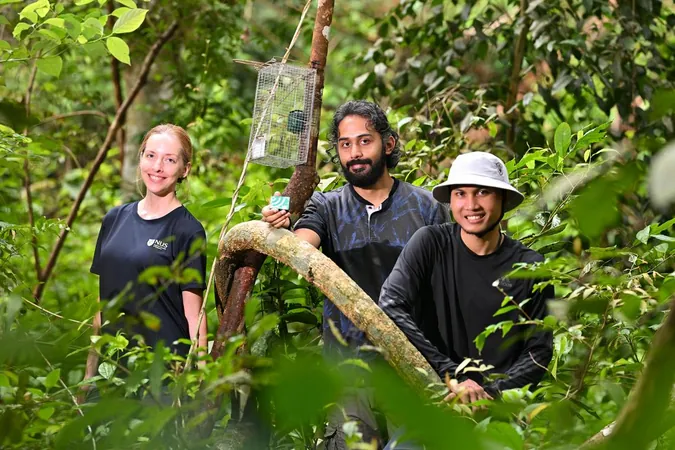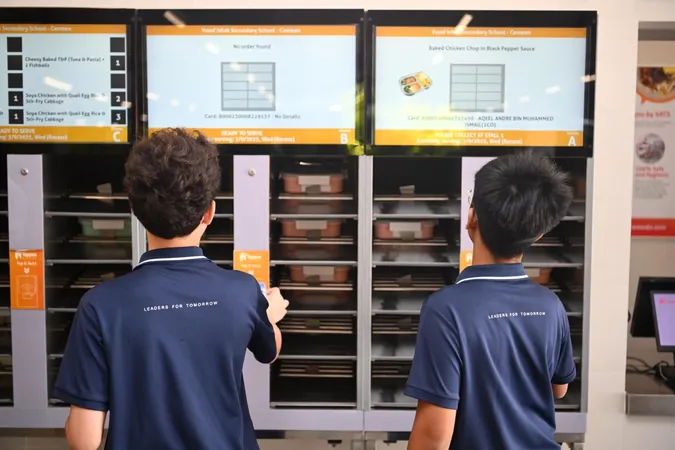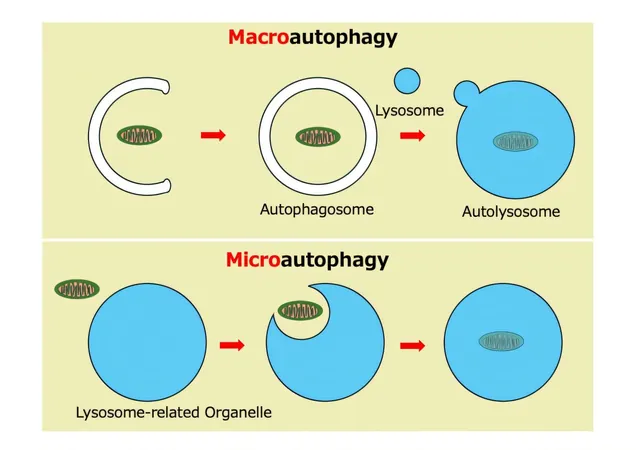
Eavesdropping on Singapore's Monkeys: A High-Tech Defense Against Disease
2025-08-21
Author: Wei Ling
A Cutting-Edge Initiative to Combat Disease Spread
SINGAPORE - Brace yourselves for a groundbreaking project aimed at protecting public health! Over two dozen state-of-the-art audio recording devices will soon be scattered across the lush greenery of Singapore, ready to capture the calls of the long-tailed macaque, the island's most prevalent monkey species.
Led by Associate Professor Kimberly Fornace from the NUS Saw Swee Hock School of Public Health, this innovative research team is taking a proactive approach to identify "hot spots" where diseases carried by these monkeys could emerge to threaten human health.
The Hidden Dangers of Monkey Malaria
These social primates serve as natural hosts to malaria-causing parasites, and through clever acoustic monitoring, researchers can pinpoint their presence without needing to physically see them. By collecting and analyzing their calls, they can also correlate this data with areas bustling with human activity and mosquitoes.
Currently, pilot studies are underway at Pulau Ubin and Mandai's Night Safari, with a nationwide rollout set to kick off in September.
Malaria: A Threat That's Still Lurking
Malaria can jump from monkeys to humans via mosquitoes that feast on infected macaques. Though Singapore has been malaria-free since 1982, the Republic must remain vigilant due to its strategic position as a transport hub.
Deploying the AudioMoths: A Unique Approach
The special audio devices, nicknamed AudioMoths, will be placed in 25 key locations and are expected to stay in the field for eight months to a year. These strategically chosen spots, such as the Rail Corridor and northern park connector loop, are frequented by both people and macaques, marking them as ideal locations for monitoring monkey activity.
Decoding a New Threat: Plasmodium knowlesi
In recent years, the spotlight has shifted to Plasmodium knowlesi, a parasite historically found in long-tailed macaques that has now crossed into humans. Alarmingly, Singapore's first human case occurred in 2007 among a soldier who trained in monkey-inhabited forests. Though human cases stalled after that, a recent study revealed that monkeys in some areas still carry this dangerous parasite.
A Collaborative Effort Against Disease
Using advanced bioacoustic technology, researchers aim to create more effective disease surveillance strategies. By identifying where humans and animal carriers intersect, health authorities can implement targeted measures like trapping vectors to manage disease spread.
Climate Change: A Looming Threat
This vital research falls under the Climate Impact Science Research programme aimed at assessing how climate change affects various life aspects, including health. Changing weather patterns can shift animal populations towards urban areas, increasing the likelihood of zoonotic diseases.
The Limitations of Acoustic Monitoring
While acoustic monitoring offers valuable insights, it can't determine exact monkey populations or always filter out background noise. Collaborating with other methods like camera traps allows for a more nuanced understanding of macaque ecology.
A Vision for the Future
Dr. Chelsea Baker, a research fellow with the NUS team, emphasizes the interconnected nature of climate, animal, and human health, advocating for research that spans these areas. This collaborative approach is essential for effective public health strategies, not just in Singapore but throughout Southeast Asia.
So, as the AudioMoths gear up to eavesdrop on Singapore's macaque society, this innovative mission represents a bold step towards safeguarding public health in the face of evolving environmental challenges.




 Brasil (PT)
Brasil (PT)
 Canada (EN)
Canada (EN)
 Chile (ES)
Chile (ES)
 Česko (CS)
Česko (CS)
 대한민국 (KO)
대한민국 (KO)
 España (ES)
España (ES)
 France (FR)
France (FR)
 Hong Kong (EN)
Hong Kong (EN)
 Italia (IT)
Italia (IT)
 日本 (JA)
日本 (JA)
 Magyarország (HU)
Magyarország (HU)
 Norge (NO)
Norge (NO)
 Polska (PL)
Polska (PL)
 Schweiz (DE)
Schweiz (DE)
 Singapore (EN)
Singapore (EN)
 Sverige (SV)
Sverige (SV)
 Suomi (FI)
Suomi (FI)
 Türkiye (TR)
Türkiye (TR)
 الإمارات العربية المتحدة (AR)
الإمارات العربية المتحدة (AR)